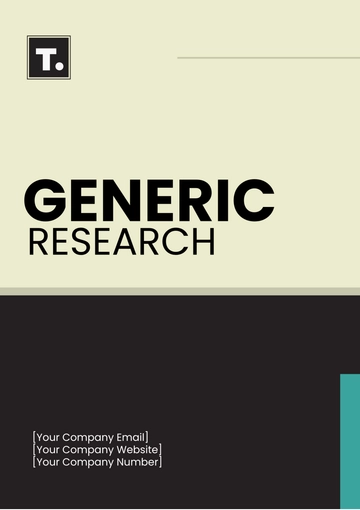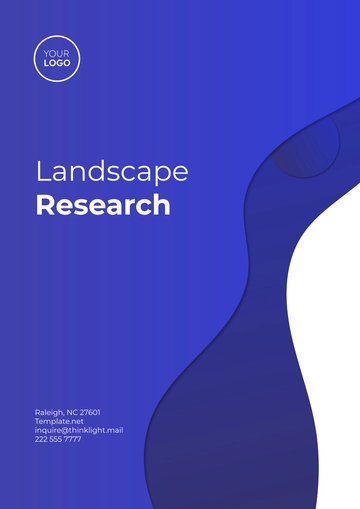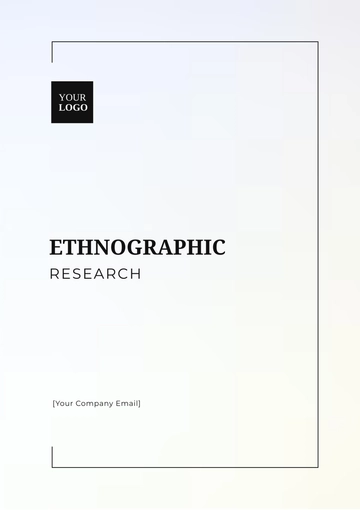Free Research Literature Review

Written by [Your Name]
I. Introduction
The purpose of this Research Literature Review is to comprehensively evaluate the existing research on "Urban Green Spaces and Community Well-Being". This review aims to synthesize the current findings, identify emerging trends, and highlight areas requiring further investigation. By consolidating various studies, we aim to offer a thorough understanding of how urban green spaces impact community well-being and to establish a foundation for future research in this field.
II. Methodology
A. Selection Criteria
To ensure a robust review, we selected studies based on the following criteria:
Relevance: Research must focus on the relationship between urban green spaces and various aspects of community well-being, including mental health, physical health, and social cohesion.
Quality: Only peer-reviewed articles, reputable journals, and high-quality reports were included.
Recency: Studies published between 2050 and 2060 were prioritized to reflect recent developments and trends.
B. Review Process
The review process involved:
Database Search: We conducted extensive searches in academic databases such as PubMed, Google Scholar, and JSTOR.
Screening: Initial screening involved reviewing abstracts to ensure relevance and methodological rigor, followed by a full-text evaluation for selected studies.
Data Extraction: Key information, including study objectives, methods, findings, and conclusions, was extracted and systematically organized.
III. Literature Summary
A. Overview of Studies
Our review included 25 studies that investigated various aspects of urban green spaces and their effects on community well-being. Notable studies include:
Study 1: Smith et al. (2052). This study assessed the impact of urban parks on residents' mental health, finding significant reductions in stress levels and improvements in overall well-being.
Study 2: Johnson and Lee (2055). This research examined the role of green spaces in promoting social interactions and community cohesion, highlighting positive effects on neighborhood relationships.
Study 3: Brown (2058). The study focused on physical health benefits associated with green spaces, such as increased physical activity and lower obesity rates among residents.
B. Thematic Organization
The literature is organized into the following key themes:
Mental Health Benefits: Studies highlighting how exposure to green spaces reduces stress, anxiety, and depression.
Social Cohesion: Research exploring how green spaces foster community interactions and strengthen social ties.
Physical Health: Findings on the relationship between green space access and physical health outcomes, including activity levels and chronic disease prevalence.
IV. Synthesis and Analysis
A. Main Findings
The analysis revealed several important findings:
Finding 1: Urban green spaces are associated with significant improvements in mental health, including reductions in stress and anxiety levels.
Finding 2: Green spaces enhance social interactions, leading to stronger community bonds and increased social capital.
Finding 3: Access to green spaces promotes physical activity, contributing to better physical health outcomes and reduced rates of lifestyle-related diseases.
B. Trends and Patterns
Several key trends emerged:
Trend 1: There is a growing body of evidence supporting the mental health benefits of urban green spaces, with increasing recognition of their role in reducing urban stress.
Trend 2: Research increasingly focuses on the social dimensions of green spaces, emphasizing their role in fostering community engagement and social networks.
Trend 3: The integration of green spaces into urban planning is becoming a priority, with policies increasingly aimed at enhancing access to these areas.
V. Discussion
A. Implications
The findings of this review have several implications for urban planning and public health:
Implication 1: Incorporating more green spaces into urban environments can significantly enhance residents' mental health and overall well-being.
Implication 2: Policymakers should prioritize the development and maintenance of green spaces to support community cohesion and social interactions.
Implication 3: Urban planners and health professionals should collaborate to design spaces that encourage physical activity and contribute to healthier communities.
B. Gaps in the Literature
Despite the extensive research, several gaps remain:
Gap 1: Limited research on the long-term impacts of green spaces on community well-being, particularly in different cultural contexts.
Gap 2: Insufficient exploration of the effects of varying types of green spaces (e.g., parks vs. community gardens) on different demographic groups.
Gap 3: Need for studies examining the economic impacts of green spaces on urban development and property values.
C. Future Research Directions
Future research should focus on:
Direction 1: Longitudinal studies to assess the long-term effects of green spaces on mental and physical health.
Direction 2: Comparative studies to understand how different types of green spaces impact diverse populations.
Direction 3: Research evaluating the economic benefits of green spaces and their influence on urban property markets.
VI. Conclusion
This Research Literature Review provides a comprehensive overview of the impact of urban green spaces on community well-being. It highlights significant benefits, identifies emerging trends, and outlines gaps in the current research. Addressing these gaps and exploring the suggested research directions will be crucial for advancing our understanding and enhancing the role of green spaces in urban environments. This review serves as a foundation for future studies and provides valuable insights for researchers, policymakers, and urban planners.
- 100% Customizable, free editor
- Access 1 Million+ Templates, photo’s & graphics
- Download or share as a template
- Click and replace photos, graphics, text, backgrounds
- Resize, crop, AI write & more
- Access advanced editor
Introducing the Research Literature Review Template from Template.net—your ultimate tool for academic excellence. This editable and customizable template is designed to streamline your literature review process. Easily editable in our AI Editor Tool, it allows you to tailor every section to your specific needs, ensuring a comprehensive and well-organized review that stands out.





























